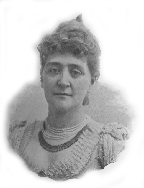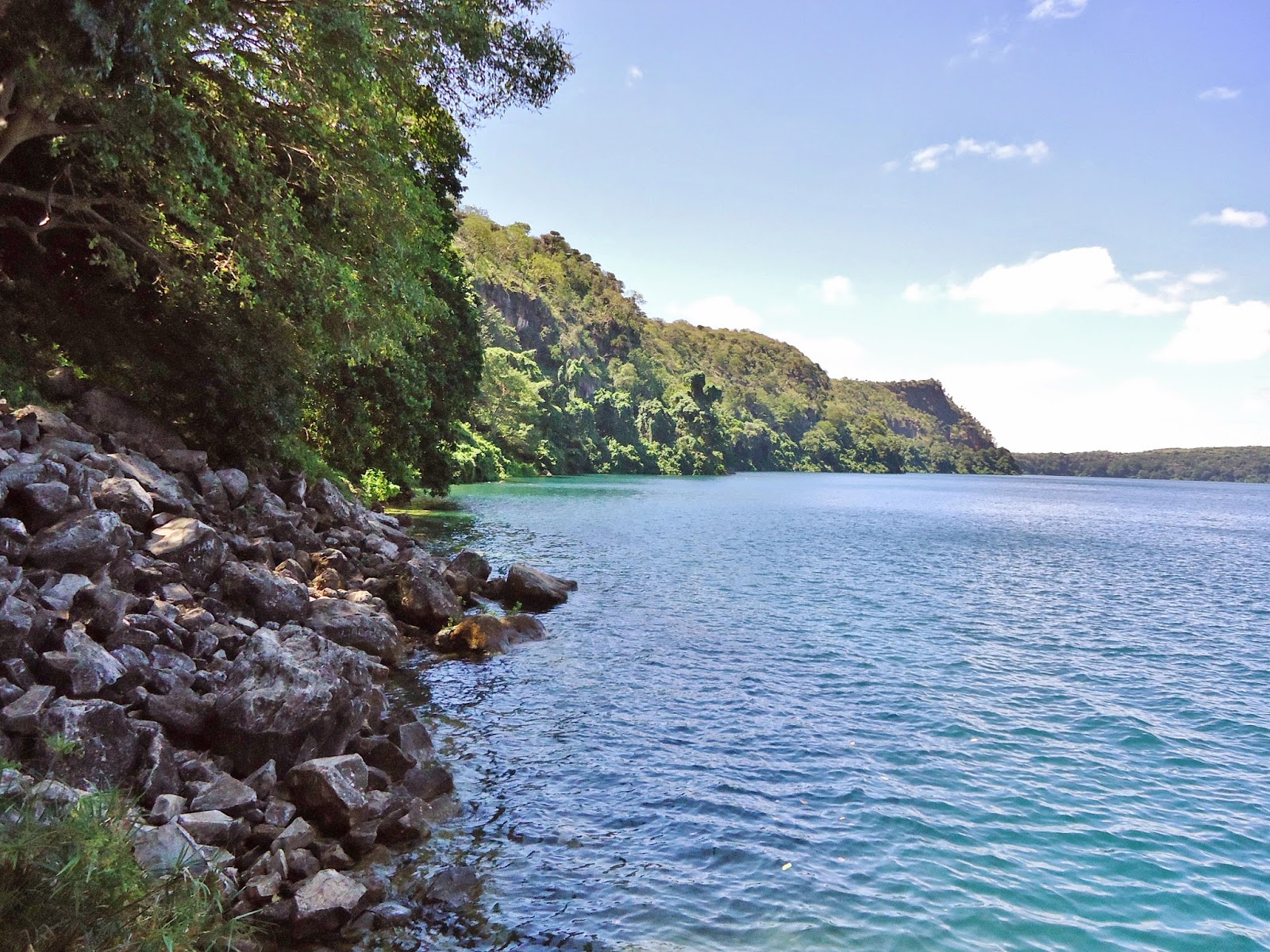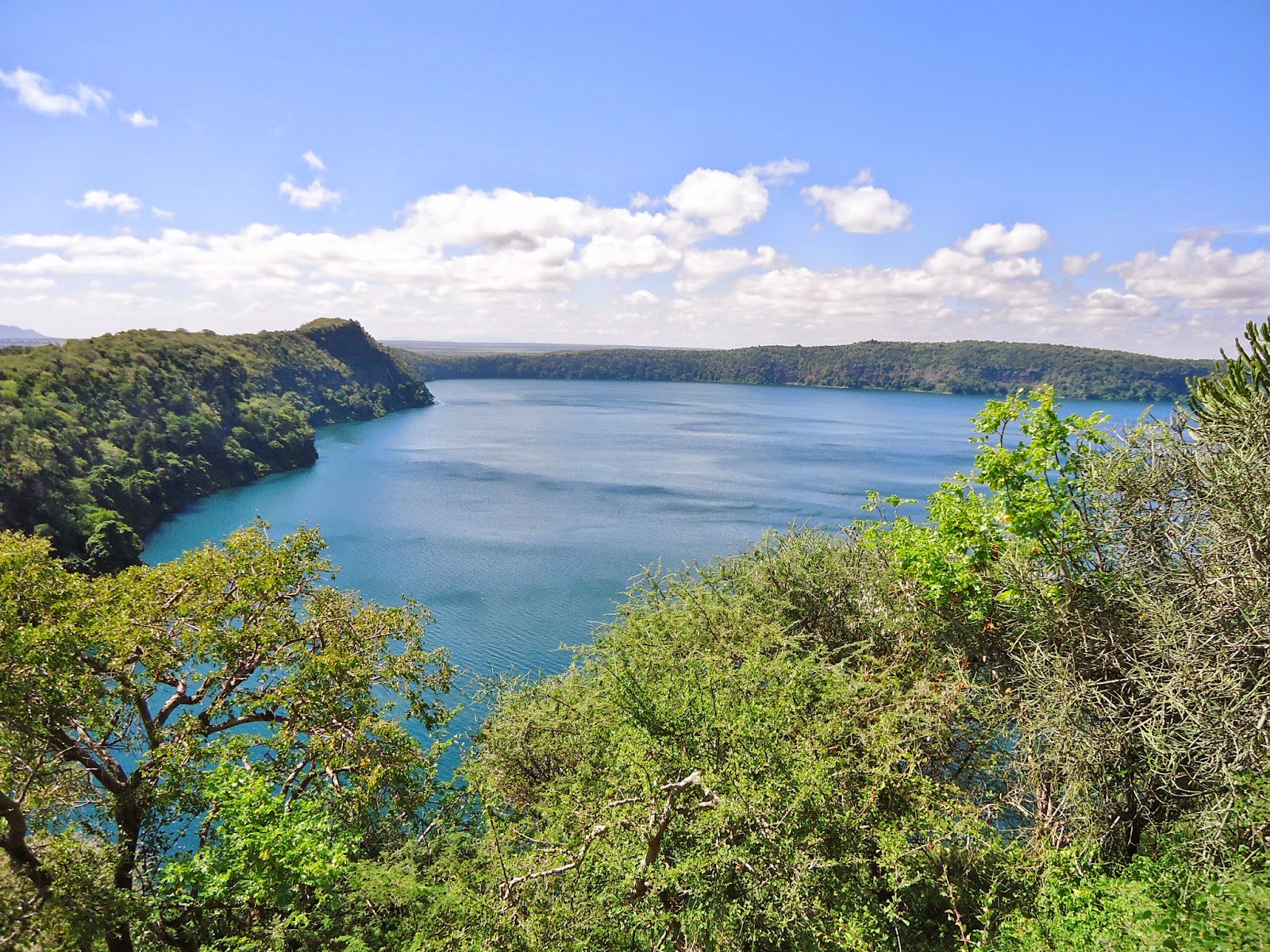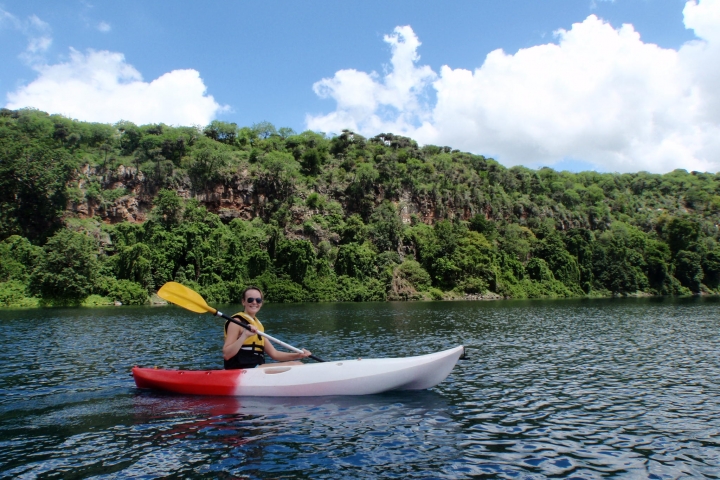Geographical History of Lake Chala
Lake Chala, an ancient caldera lake, lies some 30km to the south-east of Kilimanjaro (52 km from Moshi), and is 95 meter deep, which makes it deper than Lake Victoria. It was believed to be the caldera of the first volcanic eruption some 250.000 years ago. Recent geological research assumes that a magma chamber under Lake Chala collapsed after an eruption of nearby volcanoes and that the collapse created the space for the crater lake. But also an one-time-outbreak seems possible.

Soon after Shira’s extinction, Mawenzi started to form following a further eruption within the Shira caldera. Mawenzi has kept some of its volcanic shape to this day.
A further huge eruption 100,000 years later led to the formation of Kilimanjaro’s characteristic shiny black stone, This spilled over from Kibo’s crater into the Shira caldera forming the so-called 'Saddle'.
Later eruptions created a series of distinctive mini-cones, or parasitic craters that run in a chain south-east and north--west across the mountain, as seen in the area around Chala.
Lake Chala, is fed entirely by underground streams from Kilimanjaro, hence the normally clear waters. Chala in turn feeds the waters of Lake Jipe, some 30 kms distant as the crow flies, through more underground systems.
Water levels have been dropping over the last few years, and there is concern that one of the caves in the system may have collapsed, or maybe the waters from Kilimanjaro no longer soak down so strongly with the melting of the glaciers, and reduced rainfall.
 May French Sheldon (1847-1936), American explorer and best-selling author, was one of the first white women to visit parts of eastern and central Africa. In 1891 she undertook an exploring expedition into Africa, her circumnavigating Lake Chala, which sits inside a steep volcanic cone, attracted universal attention.
May French Sheldon (1847-1936), American explorer and best-selling author, was one of the first white women to visit parts of eastern and central Africa. In 1891 she undertook an exploring expedition into Africa, her circumnavigating Lake Chala, which sits inside a steep volcanic cone, attracted universal attention.
Myths and Legends
Quote from: ‘POPULAR SCIENCE’ 1893
She wrote 'It is believed that the Masai had a village on the mountain where the crater lake now swells and gurgles, and that during a volcanic eruption of Kilimanjaro the people and their herds and poultry were blown into mid-air, and that their spirits still hang in space, without a home, that the moaning and soughing of the wind through the trees, the strange rustling and mysterious noises caused by the reverberation of the rocky cliffs surrounding the lake, proceed from the spirits of these poor people, their cattle and poultry. Although fish are abundant in this lake, the natives could not be induced to taste them. The same people believe that their ancestors inhabit the bodies of the Colobus monkeys, and will not under any circumstances knowingly kill one of those animals'.
Lake Chala still ‘moans' today. Although the wind may stop blowing on the savannah, down in the crater it will still whirl round the lake, bouncing off the crater walls with a roar like surf crashing onto a reef. Wind patterns ruffle the surface of the lake and waves can cause ‘white horses’ on the water.
Nowadays the lake is accessible, much of the forest has gone and the above beliefs no longer hold true, but there is still a lot of superstition among the local people, and some will not go down to the lake even today.











